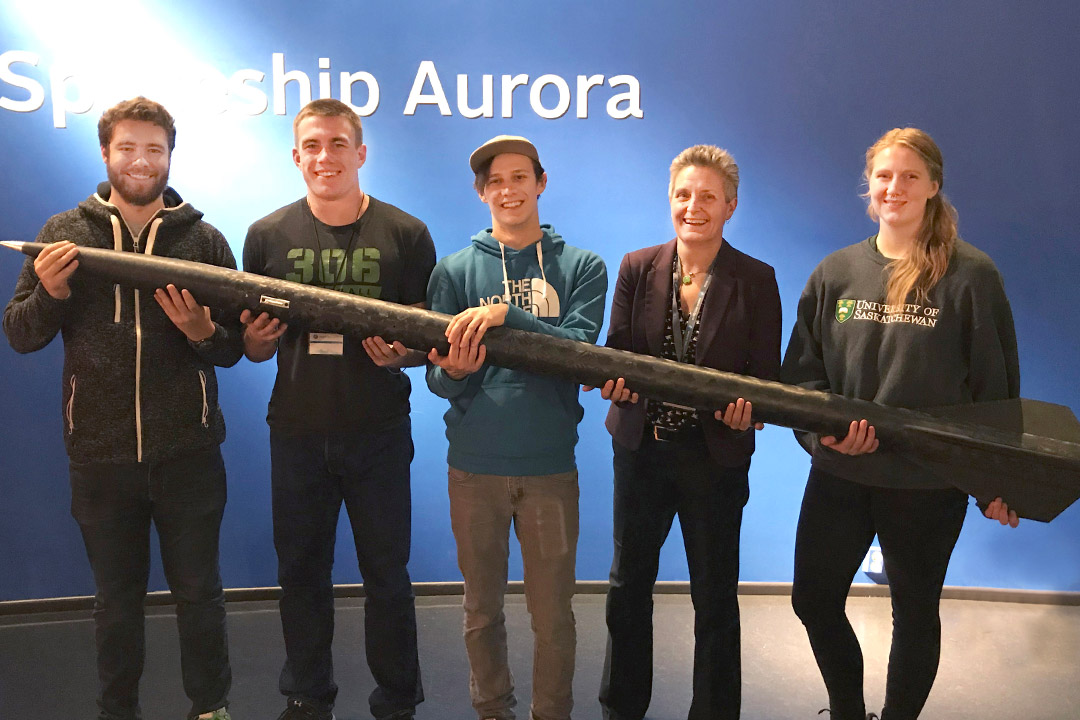And then, just as quickly, he watched via remote monitor as the projectile dropped with little more than a blip into the Arctic Ocean.
“It was over in a split second,” the University of Saskatchewan student said. “Those things go a lot faster than they look on TV. In that moment, it doesn’t really sink in. You just think about how cool it is, and now a few weeks out you can look back and appreciate it more. It’s just incredible.”
In his third year of engineering physics, Gray is one of four students from the U of S this fall who took part in CaNoRock, the Canada Norway Student Sounding Rocket Program.
CaNoRock has run annually since 2012, offering U of S students the unique opportunity to visit the Andoya Space Centre in Andenes, Norway, and experience designing, building, launching and collecting data from an actual rocket, with oversight from a team of dedicated, experienced professionals. The CaNoRock program was recently expanded when College of Arts and Science Dean Peta Bonham-Smith signed a memorandum of understanding on Oct. 19 to renew the agreement and add a satellite research component (CaNoSat).
For Gray, the globe-trotting adventure was one of the highlights of his Physics 391 course, which takes students to Norway and back, building upon their experience after they return to Canadian soil.
“CaNoRock is the first step in a ladder of training opportunities for students,” said U of S associate professor Kathryn McWilliams, one of the founders of the CaNoRock exchange program. “It gives them a taste of what aerospace and space research and industry are like—multi-national teams, working on a challenging project, with a real deadline. It allows them to develop skills that they can use in the future, whether they go on to do further studies or work in industry.
“It’s a great program, and it’s nice to be able to give this opportunity to the top students at U of S. They really do rocket science.”
While Gray said he first looked into the program simply because it seemed like a “really cool” learning opportunity, he quickly realized just how much the course had to offer.
“You’re gaining experience that you would never get inside regular school programs, and you’re really, really, getting a chance to see what things will be like outside of school—to work directly on projects rather than doing something that’s completely set out in advance,” he said. “The connections you make and the people you meet over there are all great. It’s an experience you’re not going to get in school otherwise.”
For students like Gray, who already have one eye trained on life after university, it’s classes like these that provide the rare chance to explore big ideas, personal dreams and professional aspirations.
“My career path is definitely to work in the aerospace industry, whether that’s on rockets or on other things,” he said. “I think the class will definitely have a strong impact, even if the technical skills gained may not be directly involved. The critical thinking that I encountered, and the experience working with different people, will be directly applicable and will be really helpful outside of school.”
HenryTye Glazebrook is a freelance writer and former U of S communications co-ordinator.
